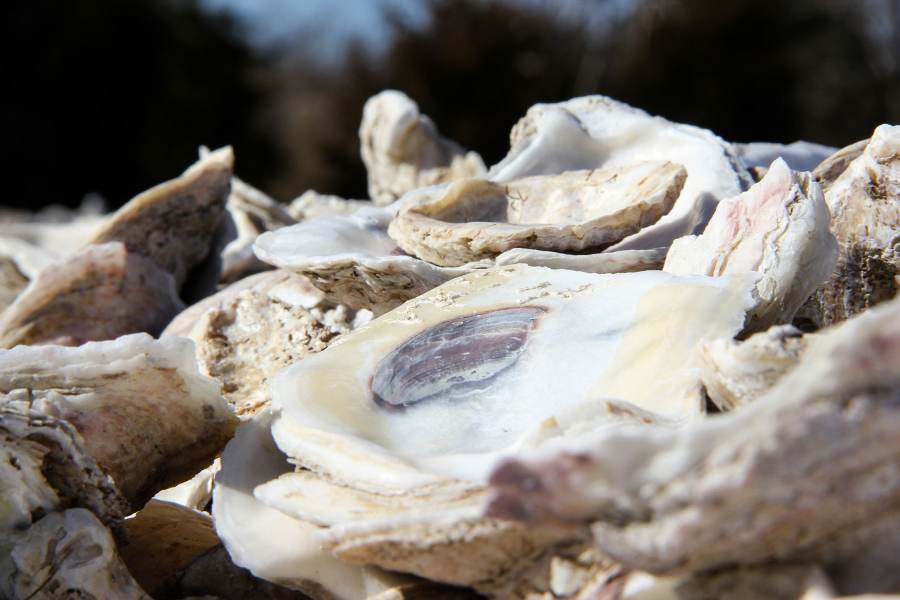Oyster shells show evidence of early human pollution of Chesapeake Bay
Humans have dramatically increased nitrogen in the estuary since the early 19th century, study finds

Researchers studying historic pollution levels in the Chesapeake Bay found their answers in a somewhat out-of-the-ordinary subject: oyster shells. A recent study from the University of Alabama looked at nutrient levels in Bay oyster shells dating back over three thousand years, finding that humans have been polluting the Chesapeake Bay since the early 19th century.
Because they live stationary lives, oysters can make useful study subjects, serving as snapshots of environmental conditions in one location. As filter feeders—they eat by pumping water through their gills—the bivalves remove nutrients from the water, absorbing much of it into their shells. This study was one of the first to use oyster shells, commonly found at archaeological sites in the region, to backdate nitrogen levels. Using that data, researchers could determine when nitrogen levels increased and what role humans may have played.
Studying oyster shells dating back to 1250 BC, researchers found a dramatic increase in nitrogen content that began in the early 1800s and increased almost exponentially until present day. That timeline corresponds what is known about human activities in the Chesapeake Bay region at that time: dramatic increases in population, agriculture and forest clearing. While American Indians altered their environment and contributed to higher nitrogen levels in the water, the effects were local. Beginning in the 17th century, an influx of European colonizers led to an increase in agriculture and forest clearing— but it wasn’t until the 19th century that human effects began to dramatically alter nitrogen levels in oysters.
Industrialization and population increases in the 1800s left their mark on the Chesapeake Bay. Between 1830 and 1880, the area’s population tripled. As a result, over 80 percent of forests surrounding the Bay were cleared for farming and development. Plowing and erosion increased the amount of sewage and sediment entering the water, increasing nitrogen levels in the water as well. Oyster populations also declined, thus limiting the ability of the Bay to filter out this influx of pollution.
While this research focused on historical nitrogen levels, nutrient pollution is still a problem in the Chesapeake Bay today. Nitrogen is necessary for plants and animals to survive, but too much of it can lead to algal blooms, which create harmful conditions for underwater life. Manure and fertilizers can wash off of agricultural fields into nearby waterways, and stormwater runoff can pick up nutrients from excess lawn and garden fertilizers, pet waste and other sources in urban areas. Chesapeake Bay Program partners work with states, local governments, farmers, businesses and many more stakeholders to implement practices that can reduce and even eliminate pollution entering waterways.
The study, “δ15N Values in Crassostrea virginica Shells Provides Early Direct Evidence for Nitrogen Loading to Chesapeake Bay,” is available online in Scientific Reports.

Comments
There are no comments.
Thank you!
Your comment has been received. Before it can be published, the comment will be reviewed by our team to ensure it adheres with our rules of engagement.
Back to recent stories